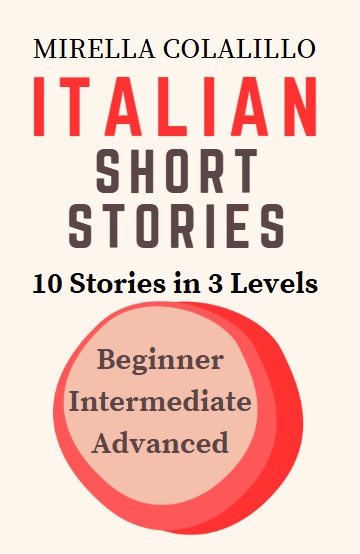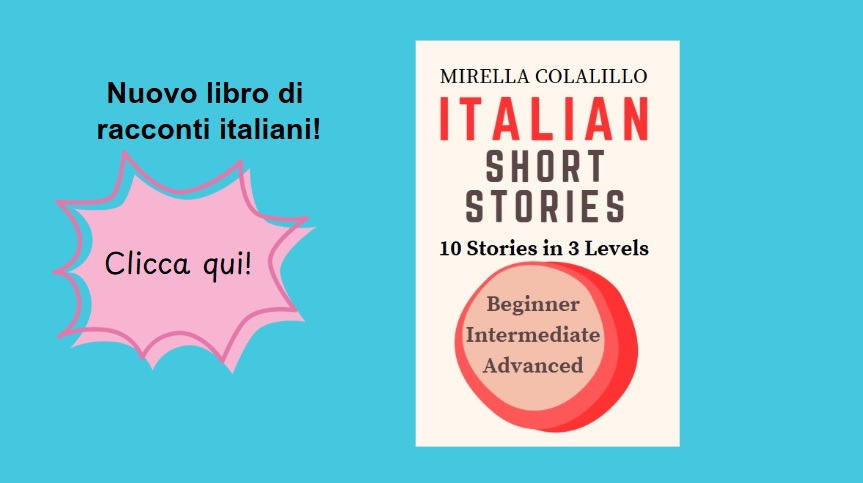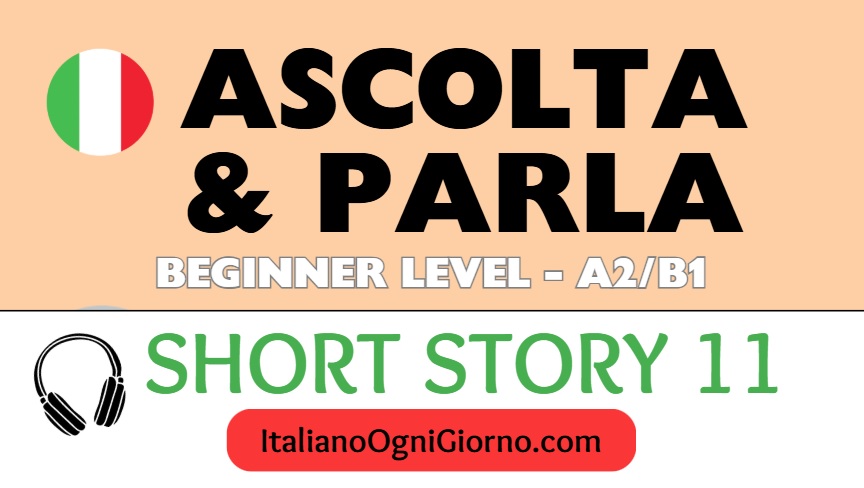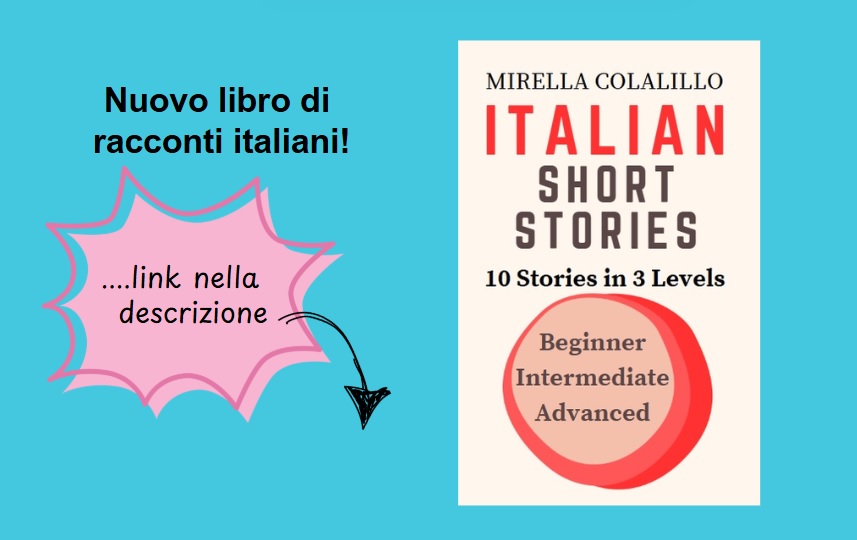Se stai per fare una vacanza estiva, ho una buona notizia, puoi continuare a praticare l’itaiano. Anzi, puoi portare l’italiano con te: a passeggio o in bici tra i sentieri ascoltando un podcast oppure seduti all’ombra di un albero o di un ombrellone leggendo un libro. Non hai che l’imbarazzo della scelta per rilassarti e immergerti nella bella lingua. Ecco alcuni suggerimenti!
If you are going on summer vacation, I have good news, you can continue practicing Italian. In fact, you can take Italian with you: walking or biking along the paths listening to a podcast or sitting in the shade of a tree or a beach umbrella reading a book. You are spoiled for choice to relax and immerse yourself in the beautiful language. Here are some suggestions.
1. Impara vocabolario nuovo
Imparare il vocabolario (verbi, sostantivi, aggettivi, congiunzioni, avverbi, ecc.) è essenziale per parlare una lingua ed è più importante che sapere la grammatica. Un buon vocabolario ci aiuta a comunicare quello che vogliamo usando le parole giuste.
Learning vocabulary (verbs, nouns, adjectives, conjunctions, adverbs, etc.) is essential to speaking a language and it is more important than knowing grammar. A good vocabulary helps us communicate what we want using the right words.
2. Ascolta un podcast italiano
Sono un’assidua ascoltatrice del Podcast “Denominazione di origine inventata” che parla dell’origine della cucina italiana. Ad ogni puntata scopro cose nuove!
L’esercizio di ascolto ci aiuta a migliorare la pronuncia e ad ampliare il vocabolario. Inoltre, asoltare dei podcast di cultura italiana ci rende più informati e colti. Ormai esistono centinaia di podcast su qualsiasi argomento, storia, arte, viaggio, cucina e cosi via.
I am a regular listener of the Podcast “Denominazione di origine inventata” which talks about the origin of Italian cuisine. I discover new things with each episode!
Listening exercises help us improve our pronunciation and expand our vocabulary. Furthermore, listening to podcasts about Italian culture makes us more informed and knowledgable. There are now hundreds of podcasts on any topic, history, art, travel, cuisine and so on.
3. Leggi racconti italiani
Se ti piace leggere racconti, questo libro fa per te. Ogni racconto è stato scritto in 3 livelli. Quindi se sei un principiante puoi leggere le storie nel livello A1 per principianti, ma avanzando con l’italiano potrai poi leggere il livello B1 e poi quello C1! Ogni racconto usa le stutture grammaticali e il vocabolario per quel livello. Se invece il tuo livello è C1, troverai interessante anche paragonare e analizzare la lingue nei tre livelli.
If you like reading short stories, this book is for you. Each story has been written in 3 levels. So if you are a beginner you can read the stories in the A1 level for beginners, but as you advance with your Italian you can then read the B1 level and then the C1 level! Each story uses the grammatical structures and vocabulary for that level. If your level is C1, you will also find it interesting to compare and analyze the languages in the three levels.
4. Impara l’italiano con storie guidate
Questi video-racconti ti guidano nella lettura, pronuncia e comprensione. Ti incoraggiano a parlare attraverso la ripetizione a due diverse velocita. Le domande di comprensione ti aiutano a ricordare e riformulare il vocabolario e le frasi della storia. Ogni storia ha un PDF scaricabile gratis e ogni mese pubblico almeno due video, quindi resta all’ascolto per i prossimi!
These video stories guide you through reading, pronunciation, and comprehension. They encourage you to speak through repetition at two different speeds. Comprehension questions help you remember and reformulate the vocabulary and sentences in the story. Each story has a free downloadable PDF, and I publish at least two videos each month, so stay tuned for the next ones!
5. Studia la storia italiana
Uno dei miei articoli culturali preferiti sul mio blog che parla dell’evoluzione delle lettere dall’Antica Roma. Quando viaggiamo in Italia troviamo molte scritte romane, che a volte non capiamo. Mi aiuta aver studiato il latino a scuola. Sai che una tipologia di lettera in particolare è molto usata nel cinema.
One of my favorite cultural articles on my blog about the evolution of letters from Ancient Rome. When we travel in Italy we find a lot of Roman writing, which sometimes we don’t understand. It helps that I studied Latin in school. You know that one type of letter in particular is used a lot in cinema.
6. Impara barzellette italiane
E’ non solo un libro di barzellette, ma un libro di barzellette per parlare l’italiano. Il libro ha 52 barzellette da imparare, una per ogni settimana dell’anno, e ti incoraggia ad imparare a raccontare le barzellette in italiano. Per ogni barzelletta trovi anche uno spunto grammaticale. Parlare e ridere, cosa c’è di meglio!
It’s not just a joke book, but a joke book to speak Italian. The book has 52 jokes to learn, one for each week of the year, and encourages you to learn how to tell jokes in italian. For each joke you also find a grammatical tip. Talking and laughing, what’s better!
7. Ascolta e canta canzoni italiane
La lingua è musica! Ascoltare canzoni e, ancora meglio, cantarle è non solo divertente, ma è il miglior esercizio per migliorare la pronuncia poiché le parole diventano parte della melodia senza alcuno sforzo. Inoltre, la canzone è un esercizio di ripetizione e, come sappiamo, più ripetiamo, più ricordiamo e più impariamo!
Language is music! Listening to songs and, even better, singing them is not only fun, but it is the best exercise to improve pronunciation because the words become part of the melody without any effort. Furthermore, the song is an exercise in repetition and, as we know, the more we repeat, the more we remember and the more we learn!
8. Studia un argomento di grammatica
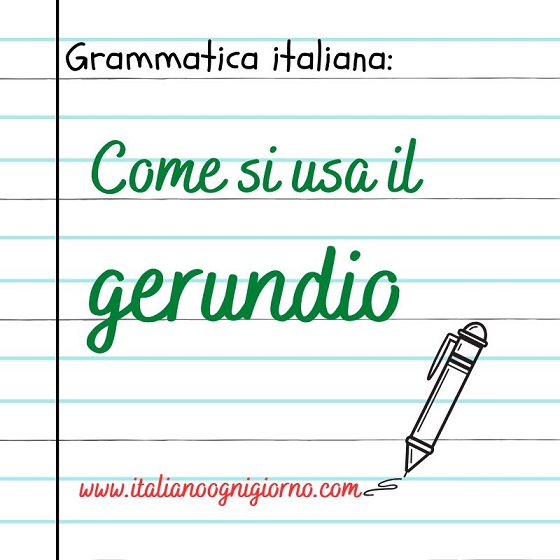
E perché no…imparare o perfezionare le nozioni di grammatica. In questo modo si fa una bella figura in viaggio per l’Italia!
And why not … learn or perfect your notions of grammar. This way you’ll make a great impression on your trip to Italy!
- Una rassegna: Cosa abbiamo studiato in italiano nel 2024?

- Top Italian articles of the year | Gli articoli migliori dell’anno
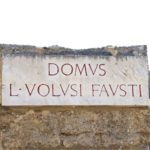
- The Vain Razor, a fable by Leonardo da Vinci

- The Days of the Blackbird-Italian legend | I Giorni della Merla
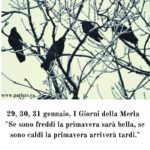
- The career of the movie icon, Sophia Loren

- Racconto italiano: Un giorno perfettamente imperfetto /A2

- Racconto italiano: Le scale al nuovo anno /B2

- Racconto italiano: Le scale al nuovo anno /A1

- Racconto italiano: La torre dell’orologio/A2-B1



